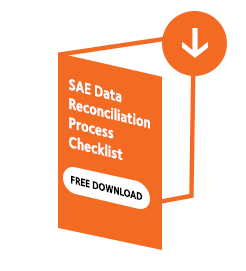Short studies are easier to manage from many aspects, including operational management as well as efficacy and safety endpoints. These studies are usually run by the same group of professionals from A to Z and require a more intense but shorter effort to produce a clean and consistent safety data set. On the contrary, long studies need to cope with periodic repetition of the same tasks run by different staff due to unavoidable turnaround. How can a software platform help in both situations?
Short should not be mistaken for simple when it comes to clinical studies. Short studies (usually Phase I or Phase IIa) include a limited number of patients and a short duration of treatment but require thorough assessments as less is known about the new drug or device at that stage of the development. The doses of the new drugs in test are not yet known to be effective and safe so both efficacy and safety endpoints are closely scrutinized. Nevertheless, these studies do not go on for a very long time and whether the number of adverse events to be collected, described and eventually reconciled is large or small, it is at least likely that the same people within the company will deal with them. Same site monitors, same safety data managers, same safety specialists. Continuity rarely poses a problem in short studies and the longitudinal follow up of AEs can benefit from the knowledge built during the conduct of the study. There is rarely substantial staff turnaround during the study and safety data managers quickly learn to identify and correct the types of discrepancies that tend to emerge depending on the nature of the study. Since patients are treated for a limited time, there is seldom the need to revisit the same or reoccurring AEs and finally database lock puts an end to the tracking and reconciliation process, maybe at the cost of an intense but manageable effort.
Long studies on the other hand may have a smoother safety profile with more expected and more similar events that pose less difficulty to monitors and safety data managers, but they are…well, longer. Sometimes phase III or IV studies can go on for years even decades. This creates a very different burden from the dense, intense processes of short studies. During the conduct of a long study, internal staff will change, the protocol may be modified more than once, safety monitoring rules and SOPs may change, site personnel will turnaround, coding rules will evolve and even the standards of care may be modified. Safety data managers and other specialists concerned with SAE collection and reconciliation have to review over and over an ever-growing database of AEs, deal with long term follow up of SAEs and eventually pass the project on to some other colleague long before the study database is locked.
As different as these two cases may sound, both can benefit from solid software tools that can assist in triaging, comparing and reconciling safety information from different sources in a fast, consistent and reproducible way. Whether the safety data managers and their colleagues have to go through a short, intense exercise of reconciliation or manage repetition in time, a reconciliation software that supports their processes and helps keep track of issues, assignments and actions with the same precision as the data itself is a clear need and helps guarantee the success of their work.
DOWNLOAD NOW THE FREE SAE RECONCILIATION HANDBOOK
The Manual / Reference Book with all the topics related to the Safety Data Reconciliation Management.







